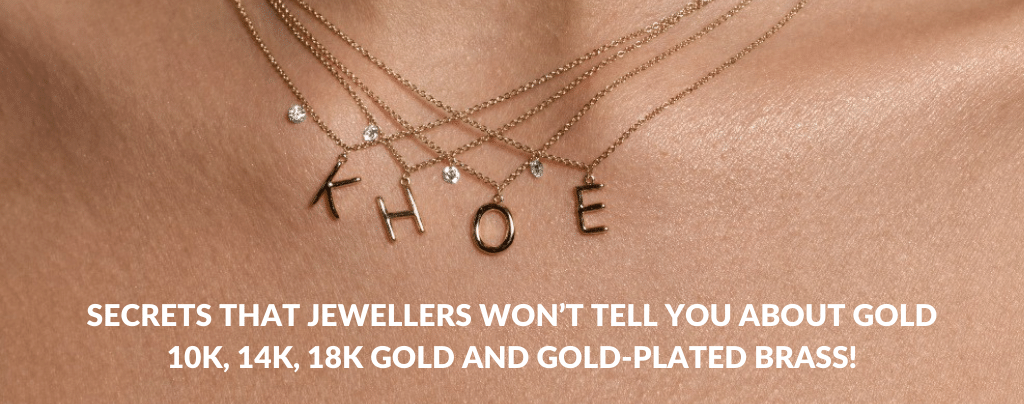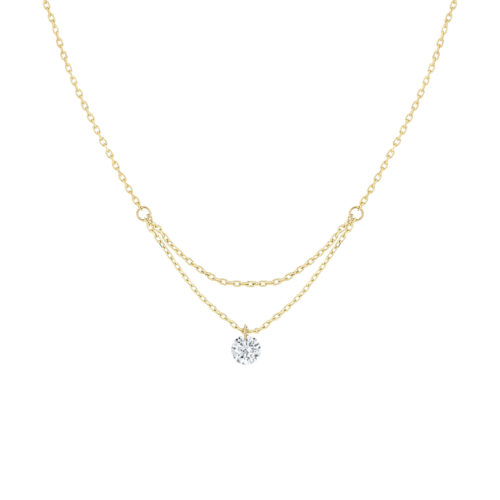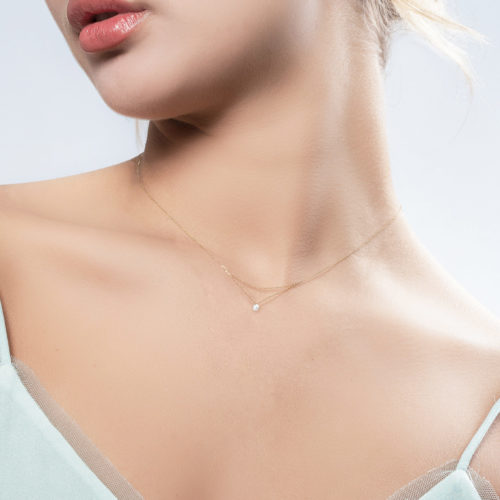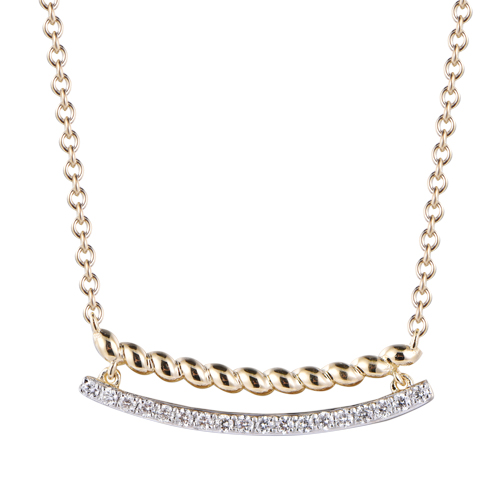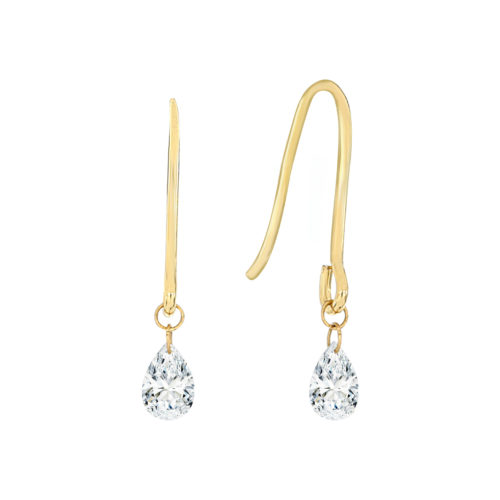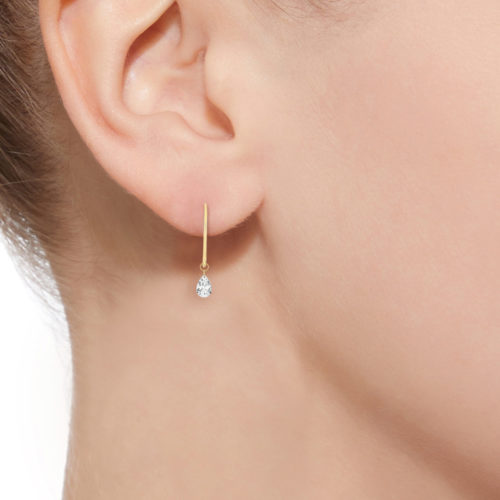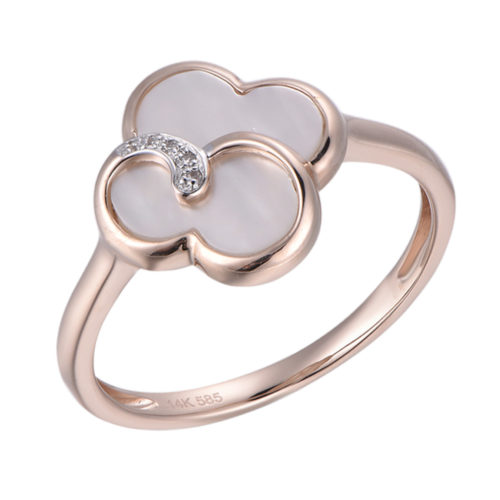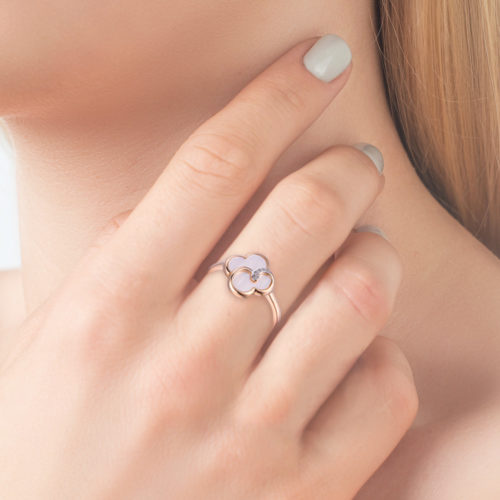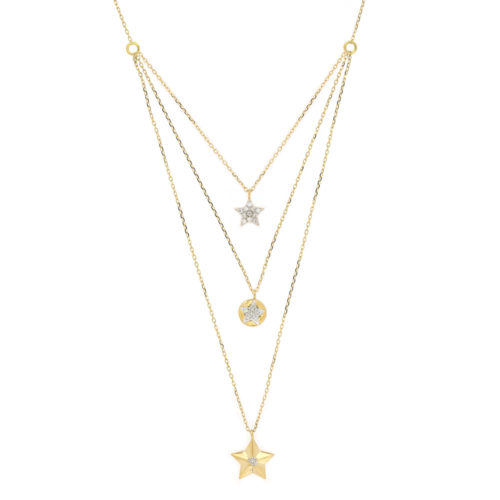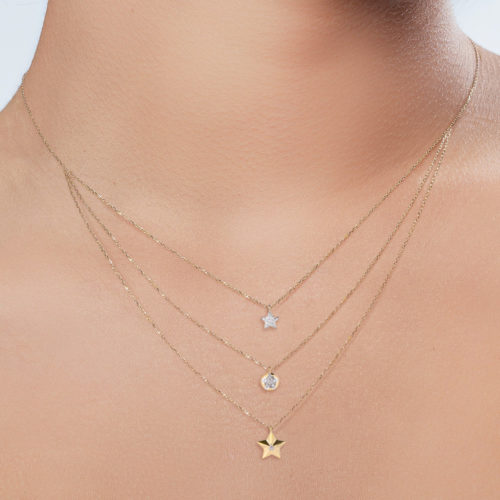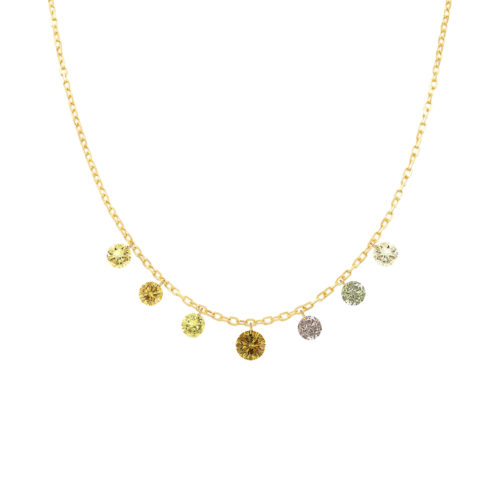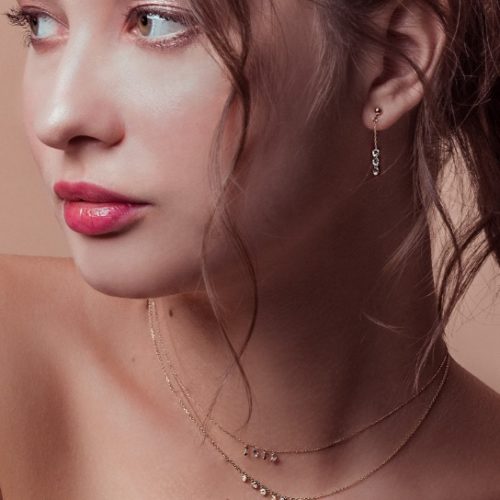10K (karat), 14K, 18K, and 24K Gold Jewellery are the most common purity grades of gold you would see in the market. Sometimes you may also see gold-tone items at a rather low price, which might actually be brass with gold plated, it is commonly seen with some big brands like Celine, Saint Laurent, Chloé, etc. From sharpness and longevity to the risk of skin irritation, each level of gold purity has its own set of pros and disadvantages.
Therefore, when you buy gold jewellery pieces, the most important thing that you have to look for is the quality of gold, so you know what you are actually getting.
These alphabet necklaces from Celine, Chloé and Khoé cost roughly 200USD different, but the former two are in brass in gold plated while the one we have at Khoé is in 18K gold with diamond.
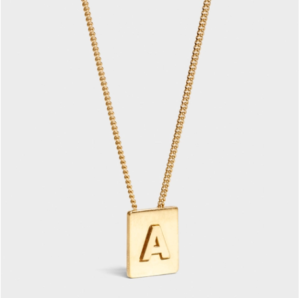
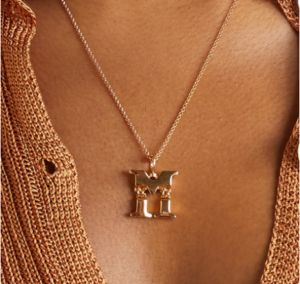
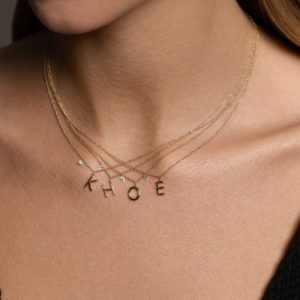
KARAT VS. CARAT: ULTIMATE MYTH BREAKER!
You might have used carat and karat interchangeably at least once in your life! But when you shop for gold jewellery, what does the K mean? Is it the quality of gold or of diamond? Let’s find out!
The karat system determines the percentage of pure gold in a piece of gold jewellery that is – the amount of pure gold in it.
When purchasing jewellery, keep in mind that “karats” refers to the purity of gold, whereas “carats” refers to the weight of a diamond.
Is 100% pure gold the best?
24 karat or 24k is a term used to describe pure gold (100 percent).
Despite the fact that 24k gold does not tarnish or decay, it is extremely soft and flexible.
As a result, it’s not suited for use in a lot of jewellery. After all, you don’t want an expensive diamond ring to distort or become significantly scratched after only a few wears.
So, what is the way out? There are options for 18K, 14k, 10k and even gold-plated brass.
What is 10k,14k and 18k gold?
- 18K Gold Advantages: As pure as possible while still being useful and attractive
- 18K Gold Disadvantages: Expensive and easily scratched
- 14K Gold Advantages: A wonderful combination of purity, durability, and cost-effectiveness.
- 14K Gold Disadvantages: Although more expensive than 10K gold, it is still a reasonable investment.
- 10K Gold Advantages: Gold that is less expensive and more durable than other varieties of gold.
- 10K Gold Disadvantages: Metal allergies are more likely to be triggered by this pale-yellow tint.
| 18K Gold | 14K Gold | 10K Gold | |
| Pricing | Most expensive, and with highest resale value | Somewhere in the middle | Most affordable and with least resale value |
| Purity | Highest and less allergic to skin | Good balance of pricing and purity | Lowest and more likely to trigger metal allergies |
| Durability | Most delicate and easily scratched | Somewhere in the middle | Most durable and easiest to handle |
Is Gold Plated Brass a hot deal?
Often people like gold plated brass because it has the same classy, attractive, and high-end appearance as gold but at a lower cost.
If you can find good quality gold plated brass in 18-20k gold, it’s a decent alternative to gold filling and can endure for three years. So, before anything happens, you’ll have plenty of opportunity to show off your striking jewellery! However, most brands are not showing this information In product details.
Moreover, resale value of the piece must be highly depreciated in terms of the material. So, think twice before you make your buying decision.
Where can I find the high quality 14k and 18k gold diamond items?
Each Khoé Jewellery piece is handmade with ethically sourced materials, from gold, diamond, pearls, mother-of-pearl, to gemstones Their diamonds and gemstones are conflict-free. They want to offer the best pieces in terms of design aesthetics, sterling artisanship, price-points and durability.
Check out the entire 14K and 18K collection:
Layer -14K Diamond ” Over the Moon ” Necklace
Nue- 18K “Hailey” Color Diamond Necklace ( Limited Collection)
Checkout the entire collection of 10K, 14k and 18k gold jewellery at: https://www.khoejewellery.com/shop/

